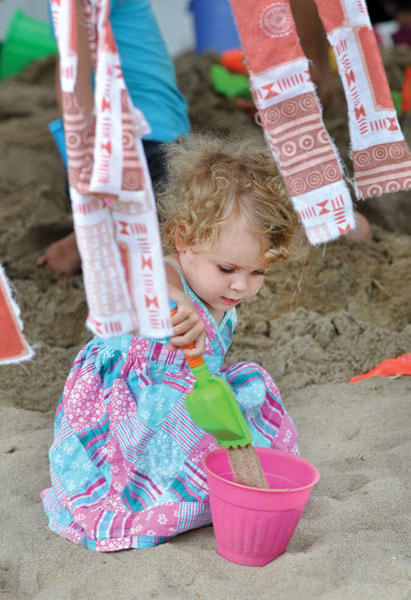One of the hallmarks of the Roots and Blues Festival is the appeal across the ages.
To that end, there has always been a family area, and this year’s Hub International Barton Family Fun Zone Stage, ensured that the youngest set at the fest had plenty to cater to their desires.
The perennially popular bouncy inflatable house and obstacle course let the kids hop off their energy, while the climbing wall drew the adventurous for a scramble up to the highest vantage point on the festival.
The best value for the Roots and Blues festival organizers has got to be the shady sand pit. For one truck-load of sand, plus a shade tent and a few toys, kids spend hours amusing themselves.
The craft tent was busy with budding artists, painting, stamping, sewing and crafting their own masterpieces, backed up by a slew of creative volunteers.
This year’s family festival stage lacked some of the big names of the kids scene in past years.
There was no Fred Penner or Sharon and Bram to draw crowds over to the kids stage as in years past. But that didn’t mean there weren’t kids, moms, dads and grandparents getting some groove on.
Jacky Essombe appealed to her audience to get involved for her interactive song and dance set. Known for playing the adult and dance stages in the past, Essombe says in her home country of Cameroon there is not really such a thing as kids music.
“Music is something to be shared by everyone. It is a way to share our culture and create experiences of togetherness,” she said, “It is a way to express joy and children are simply so natural at expressing that joy. That is what I love about the children.”
She noted how her songs impart important values in a way that is fun and not authoritative.
“We will sing about picking our fruit and dance out how we put the fruit in our harvesting baskets and then how we trade and share it with each other. This becomes a part of who we are and what we do.”
She also spoke of the way of getting the audience to perform different segments that unite into one piece.
“You are singing one thing, but hearing another and you have to concentrate to keep to your part and not get drawn into the others. It is like this for children, we think it is important for them to recognize who they are, to be who they are and not to always join the crowd.”
